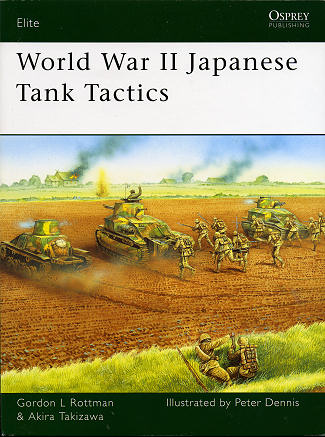 Of
all the major powers fighting in WWII, the one that did the least with its
armored force was the Japanese. Mired in the early to mid 1930s in terms of the
quality and effectiveness of their tanks, what worked for them in China against
basically no armored opposition, was not effective when it came up against
modern, Allied armor.
Of
all the major powers fighting in WWII, the one that did the least with its
armored force was the Japanese. Mired in the early to mid 1930s in terms of the
quality and effectiveness of their tanks, what worked for them in China against
basically no armored opposition, was not effective when it came up against
modern, Allied armor.
When one combines this with a distinct lack of modern armor,
then you can see that whenever they met US tanks, they came out on the losing
end of things.
What is strange about this is that they did not lack
intelligence when it came to what the latest and greatest thing was. It was just
that they apparently did not see a need to upgrade and by the time it became
apparent, the lengthy development time of Japanese weapons meant that their most
effective tanks were never used in battle!
Yet despite this, the Japanese did use their tanks quite
effectively against the Chinese, decimating their opposition with what were
basically modernized WWI tanks. Apparently they did not believe in combined
operations of tanks and infantry, despite the one time it was used, it was a
huge success.
Where there was not a lot of room to maneuver, such as on the
many islands occupied by Japan, their tanks were used hull down as mobile pill
boxes able to retreat or advance if need be. During attacks, tanks would be most
often used at night, and this was practiced a great deal. Tank commanders
learned to close their eyes when firing so that the muzzle flash would not blind
them and they could see shot fall.
Author Rottmann and Takizawa cover the full range of units,
tactics and equipment used by the Japanese during the war. Some of the results
you may find quite surprising, while others are more as expected. Superbly
illustrated by Peter Dennis in showing tactical movements and combined with what
few period photographs are still extant on the subject, the reader gets a better
idea of what these men and their equipment were like.
I found the book to be particularly interesting as so little
has been written on the subject for Western readers. It is a book I know you'll
find of interest and is highly recommended.
November 2008.
For more on the complete line of Osprey books,
visit www.ospreypublishing.com. In the US, it is
Osprey Direct at 44-02 23rd St, Suite 219, Long Island City, NY 11101., where you can
get a catalogue of available books.
If you would like your product reviewed fairly and quickly, please contact
me or see other details in the Note to
Contributors.
 Of
all the major powers fighting in WWII, the one that did the least with its
armored force was the Japanese. Mired in the early to mid 1930s in terms of the
quality and effectiveness of their tanks, what worked for them in China against
basically no armored opposition, was not effective when it came up against
modern, Allied armor.
Of
all the major powers fighting in WWII, the one that did the least with its
armored force was the Japanese. Mired in the early to mid 1930s in terms of the
quality and effectiveness of their tanks, what worked for them in China against
basically no armored opposition, was not effective when it came up against
modern, Allied armor.